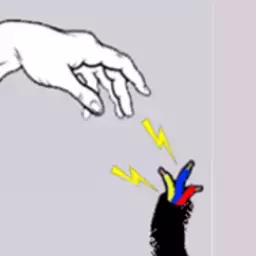

Thanks! Seems like a lot of people (both here on lemmy and elsewhere) recommend synology


Thanks! Seems like a lot of people (both here on lemmy and elsewhere) recommend synology


Knowing my track record for completing projects… turnkey is probably best for me. Haha
Seeing a loooot of recommendations for Synology


I’ve had some heartache with Plex’s categorization system too, on English language content nonetheless…
I cant imagine the pain of making it work for foreign content.

You caught me. Never worked customer support a day in my life!

I’m surprised that anyone wouldn’t have known…


Good explanation.
As @directive0 said, the diodes (triangles in the above circuit) only conduct in one direction.
On the AC wave (top left) in the positive half, two diodes are conducting. In the negative half, the other two diodes are conducting.
The two sets of diodes are connected so that the positive half and the negative half of the sine wave come out on the same line. Since the waveform on the right of the image is all positive (ignore the bumps), it is considered DC.


You could get an output, but if you want to take 100Vdc and turn it into 10Vdc… it will not do this… for this you will need a buck, sepic, buck-boost, cùk, resonant, or some other converter…
In the case of the rectifier:
if you look at a simple AC to DC converter (half-wave rectifier) either output = 0 volts or output = input - conduction losses, depending on how you polarized the DC source.
In another circuit (full wave rectifier), the diodes will be polarized such at two will allow current flow. output = input - conduction losses
If the rectifier is something more complex (12 pulse rectifier)… this circuit relies on transformers. If you put DC on the primary of the transformer then the output will be 0 volts and thus the rectifier output will also be 0 volts. In this example I’ve ignored the fact that the transformers have 3 terminals and the DC source would only have 2.
I’m less knowledgeable of more elegant rectification methods (such as active rectification)…
Interestingly… the fundamental DC to AC converter (inverter) is the same circuit as the full wave rectifier, with the diodes replaced with controllable switches (SCRs, IGBTs, IGCTs, MOSFETs, ect.)


Imagine they find the submarine with all but one of the passengers dead…
I’m so sorry you have to deal with that. It’s not easy living in an environment when you don’t feel like you’re accepted unconditionally.
Just remember that there is nothing wrong with you whatsoever.


Here is a post from the admin of the lemm.ee instance. It has a lot of info and a link to FAQs.
Enjoy!


I love it when my cat sleeps on my desk by me. It’s the perfect height to smother my face into his belly.


not seeing a cog :/
Edit: I see the cog. :D
Edit 2: I’m not sure what to change to enable infinite scrolling on this page


You can tell she had no idea what to expect. haha
Looks like she’s got some thighs on her 😍
You could ask lemmy! :D
Can you link something that explains this more?